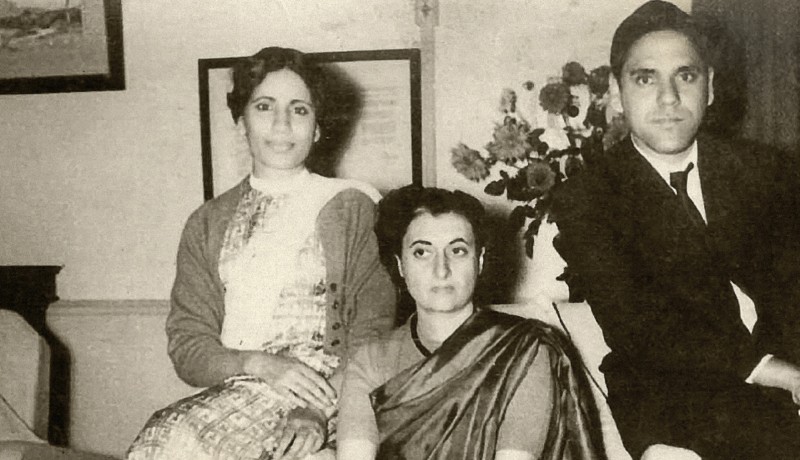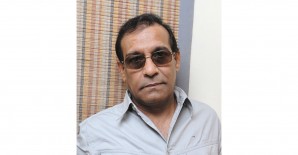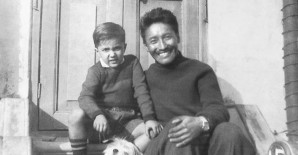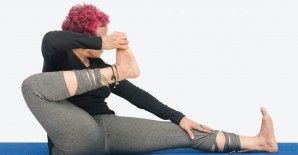
Columns

On Indira Gandhi’s 98th birth anniversary, Raj Kanwar remembers her as a suave and courteous young lady with an inimitable fashion sense
My first meeting with Indira Gandhi happened sometime in the late 1950s when the Gandhi boys, Rajiv and Sanjay, were at Doon School and their mother was a frequent visitor to Dehra Dun to meet them. Sometimes she came alone, while on other occasions she accompanied her father, prime minister Jawaharlal Nehru.
Indira Gandhi was my sister Neel Kamal’s idol; she admired Gandhi’s sense of fashion and the elegant way in which she draped her saris. “You are a journalist and can easily meet Indira Gandhi,” Kamal insisted, and coaxed me to take her along to see Gandhi.
The opportunity came a week later on 19 November, when both Nehru and Gandhi were visiting Dehra Dun and were staying as usual at Circuit House. So, that morning, my sister and I arrived at Circuit House a little before 10 am. Kamal was farsighted enough to knit a blouse for Gandhi. Those were the balmy days when the dreaded word ‘security’ had not yet entered the political jargon. If you wanted to meet a VVIP, you simply called on them. The Circuit House animate fixture Ram Prasad accosted me in the veranda. “Aap Panditji se milna chahate ho?” he asked. “Nahin, mein aur meri behan Indiraji ko happy birthday karne aayen hein,” was my answer.
Gandhi was still in her suite. Fifteen minutes later, she appeared in graceful splendour. It was our first face-to-face meeting with Indiraji. Holding her nerves, my sister first introduced herself and then me in Hindi. We duly presented the knitted blouse to the ‘birthday girl’!
How we were able to break the ice, spend nearly half an hour with her over tea and even got ourselves photographed with her is a long story that I have repeatedly told over the years. After the meeting, Gandhi left for the school to fetch her sons and take them out for a treat at Kwality, which was then the popular place for a rendezvous in Dehra Dun.
Subsequently, I met Indiraji whenever she visited Dehra Dun, and also did a few stories on her. From being an acquaintance, I had graduated to being a friend of sorts. My academic background and the fact that I was a prominent student leader had obviously impressed her, and she started liking me and talking about many things. Once, she even invited me to join the Youth Congress, presumably in a position of responsibility. But, as was my wont, I declined the proffered offer. Ideologically, I was then more inclined towards the Praja Socialist Party.
Indira Gandhi’s link with Dehra Dun had become stronger since her sons studied here. They were first put in Dehra Dun’s Welham Preparatory School for Boys and thereafter moved to Doon School. In the process, she had developed very good personal relations with Hersilia Susie Oliphant, Welham’s founder and the first principal. She had become equally friendly with Doon School headmaster John Martyn, as also with K C Joshi and Dr Hari Dutt Bhatt, successive housemasters at Kashmir House, where the two boys were housed. However, it went to her credit that she did not ever throw her weight around, and was very polite, courteous, and observed all the rules and regulations at the school. Never once did she seek favours or break the school’s protocol. When headmaster Martyn sought the withdrawal of Sanjay for telling a lie, she quietly withdrew the ‘admonished boy’ without demur or ill will.
In the meantime, I had become a rolling stone. First, I moved to Delhi as a reporter on the staff of The Indian Express. Thereafter, I joined the Himachal Pradesh government as editor in the Directorate of Public Relations and Tourism. My next job was as the first public relations officer (PRO) of Oil & Natural Gas Commission (ONGC). I was posted in Baroda to help start operations in Gujarat. My next posting was in Sibsagar in Assam. Scared of spending all my life in a government company, I resigned and came to Calcutta, where I immediately found a job in a leading private company as advertising manager. Though the job was lucrative and provided me many social opportunities, I was then a bachelor and very homesick. The green valley repeatedly beckoned me. So I again put in my papers and returned to Dehra Dun.
Thereafter, I launched Witness, a newsweekly, on 15 August 1964, which had a successful run. It was then that I resumed my contacts both with Nehru and Indiraji. Meanwhile, Rajiv left Doon School in 1960 and Sanjay in 1961. With her sons having left the school, Gandhi’s visits to Dehra Dun became minimal. During those days, I only met her two or three times; the old warmth though seemed to have returned.
My last meeting with Indiraji was in May 1964 when prime minister Nehru had come to Dehra Dun for rest and recuperation after suffering a stroke on 8 January at the Bhubaneshwar AICC session. She had accompanied her Papu to Dehra Dun to look after him. When I met her, she expressed her concern and anxiety about Papu’s health, but I reassured her that he was quite happy in Dehra Dun and would soon regain health.
Nehru and his Indu spent four days in Dehra Dun’s salubrious climate; Nehru met one of his old friends, Sri Prakasa, and seemed to be in good spirits. As the sun set yonder beyond on the evening of 26 May, Nehru and Indira took off for Delhi. None in the assembled gathering at the helipad could have imagined that it was to be Nehru’s last sunset. India’s first prime minister and the darling of the masses, Nehru did not wake up the following morning. It was befitting that Nehru had spent his last four days in Dehra Dun, the city he loved immensely.
Indira’s life was truly a rollercoaster ride with its ups and downs. At times, she was at the pinnacle of glory and power, and then suddenly she would be rolling down as if from a precipice. She remained the prime minister of India for a total of 5,829 days, spread over three tenures. The declaration of Emergency on 25 June 1975 was a black spot on Gandhi’s otherwise bright image. However, on the whole, she was considered one of the most competent prime ministers India ever had. This was proved to the hilt when she returned to power with a massive majority in the 1980 elections.
The Indira Gandhi that I knew was suave and courteous, and never imperious. She was very polite with the staff at Circuit House where she lived whenever she was in town; she was extremely respectful to seniors as also the masters at Doon School. That was the Indira Gandhi I had known. I did not have the opportunity to meet her after she became India’s prime minister. I sent her a few letters, which remained unanswered, and were probably not even delivered to her. When she was tragically assassinated on 31 October 1984, I shed many tears and wondered what would have happened had our friendly relations continued.
The writer is a veteran journalist based in Dehradun
Photo courtesy: Raj Kanwar Featured in Harmony — Celebrate Age Magazine November 2015
you may also like to read
-
Mental workout
Mukul Sharma tells you how to keep those grey cells ticking Everyone will ultimately lose his or her brain….
-
Helpline
Dr Harshbir Rana answers your queries on personal and social issues related to ageing, elder care and intergenerational relationships ….
-
Off the cuff
Raju Mukherji pays tribute to his first hero, Tenzing Norgay, an exemplary mountaineer Darjeeling, 1955. Dr ‘Pahari’ Guha Mazumdar….
-
Yoga RX
Shameem Akthar shows ways to control debilitating ankle pain through regular practice Ankle pain is so common and prevalent….







